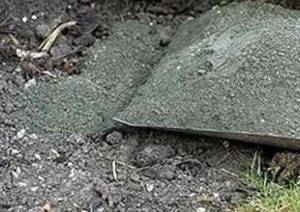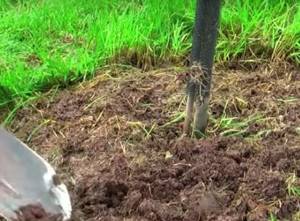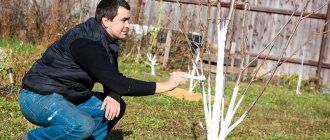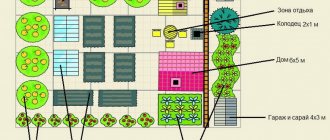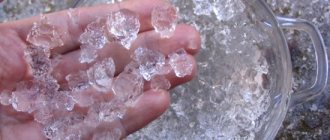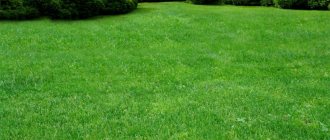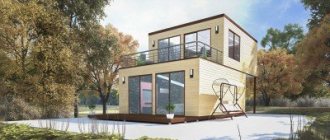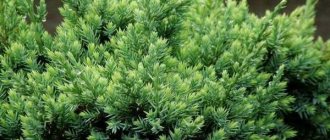Habitat of silver maple
The natural habitat of this tree is the eastern lands of North America and the bordering expanses of Canada. The silver maple tree prefers to grow in damp lowlands, along river and lake shores with rich soils. Occasionally, individual specimens are found at higher elevations. Trees climb to a height of 30-600 meters. In arid areas they grow only near water.
Distribution[ | ]
It is native to North America and is distributed over a vast area of the eastern United States and Canada from Nova Scotia and New Brunswick west to the Canadian provinces of Ontario and Manitoba, further south through Minnesota and Kansas to northern Texas, and from there east to Georgia.
It grows in various natural landscapes, dominates or is one of the dominants in broad-leaved and mixed mesophytic forests. Sugar maple is usually codominant with large-leaved beech ( Fagus grandifolia
), American linden (
Tilia americana
) and various species of birch (
Betula
spp.)
Biological description of the tree
Cylindrical or round in shape and a wide and sparse crown is formed by drooping branches. At the beginning of tree development, the branches rush downward, and then, heading upward, they bend beautifully in an arched shape.
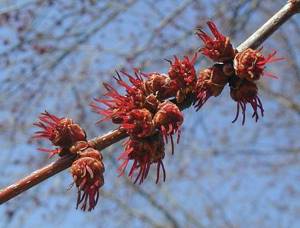
The branches are equipped with V-shaped leaf scars (exactly the same as the red maple). True, silver maple branches are stronger, often colored dark brown, and when broken they emit an unpleasant odor. Young trees have bright red branches, while mature trees have silver-gray branches.
The length of the opposite five-lobed leaves, deeply dissected on top, green, bluish-silver on the bottom, is 8-16 cm, and the width is 6-12 cm. In autumn, the foliage blazes with yellow-golden and orange colors.
Young specimens are covered with smoky gray smooth bark. As trees mature, the bark darkens and is covered with long, narrow, flaky scales. Silver maple has a taproot system. Lateral roots, branching, form a superficial fibrous system.
General description of sugar maple
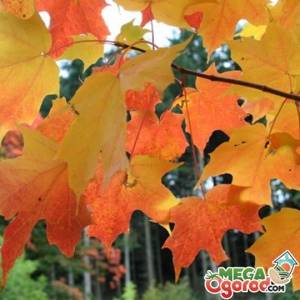
Sugar maple, also known as Canadian maple, is a deciduous tree more than 40 meters high. It lives for a very long time: the life expectancy of the Canadian maple reaches 400 years. Maple prefers places well lit by the sun or partial shade; it reproduces by seeds. The bark of a young tree has a light gray or light brown tint; over the years it begins to darken.
Maple has powerful roots; the older the tree, the more powerful and branched its root system becomes.
Maple is characterized by a dense, spreading crown. The leaves are simple, they are located opposite on the branches. The leaf blades have a characteristic curly shape; they look especially beautiful and unusual in the canopy when the leaf acquires a rich red or yellow tint. The tree is deciduous; in the autumn months it completely sheds its leaves.
The tree blooms in spring: small yellow-green flowers appear on the branches, collected in clusters. The fruit of the plant is a lionfish; each lionfish contains 2 seeds. Most trees are dioecious, with male and female flowers found on the same plant. The sugar maple got its name from its ability to produce sweet maple sap, from which maple syrup and sugar are made.
Flowering and fruiting
The plant is endowed with red-brown buds that cover large scales. Flower buds tend to form conspicuous clusters. Flowering of trees begins in mid-spring, before the leaves bloom. The flowers are greenish-red in color. During the flowering period, the movement of sugary juice suitable for cooking begins.
Lionfish is the name of the silver maple fruit. The fruit of the tree is assembled from two identical wings in which the seeds are hidden. The length of the wings connected in pairs is 3-7 cm, and the width is 12 mm. The ripening time for sickle-shaped lionfish is late spring.
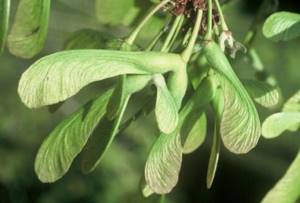
Sugar maple requires high humidity for seed germination. In dry times they lose their germination capacity. Fruits that fall into moist soil immediately germinate. Sprouts may appear within 24 hours. Seeds that fall into moist soil after rain have the best germination rate.
The seeds of this plant are heavy. A pair of wings connected to each other helps them move in space (from here the answer to the question “what is the name of the maple fruit”) becomes obvious. Water flows also play a significant role in the distribution of lionfish, facilitating their movement over long distances.
What kind of Canadian maple is it?
The tree, the photo of which conveys its bright individual beauty, can reach a height of about 40 meters.
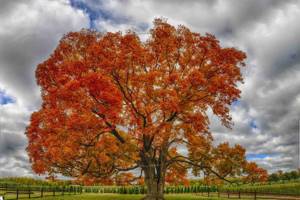
As autumn approaches, the foliage turns yellow, orange and bright red. The flowers of the Canadian maple are small, yellowish-green, collected in cluster-shaped racemes of 8-14 pieces, located on long petioles. Flowering begins before the leaves bloom and lasts from April to May. The fruit is a lionfish, consisting of two halves - seeds with wings, the length of which is 2-2.5 cm. The lionfish is located on a long red-brown or red petiole.
Growing Silver Maple
Silver maple grows well in fertile areas with good drainage. It needs a well-lit place with well-moistened, fine-textured soil. On sufficiently moist soil, trees take root easily. They have average tolerance to saline soils. Due to its ability to exist in damp places, the plant can easily withstand prolonged floods. It dominates forest areas, competing with poplar, beech and ash.
Mature trees are resistant to severe winter frosts. Young shoots sometimes freeze over in severe frosts. Trees are not able to withstand the onslaught of powerful winds and excessive snowfall. Their fragile branches break under the influence of adverse natural phenomena.
Sugar maple easily withstands unfavorable environmental conditions. He is not afraid of smoke and gas contamination of air masses. It is suitable for organizing gardening complexes in cities. Sugar maple trees are affected by several pests. They suffer from leaf weevils, whiteflies and mealybugs.
Conditions for growing maple
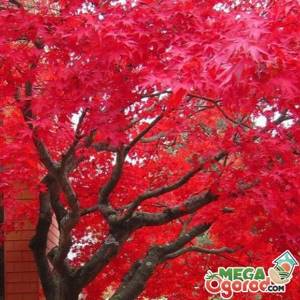
Sugar maple is one of the most unpretentious trees, so it does not require any complex care. Despite the fact that it prefers open places, it is able to grow well in partial shade and also tolerates shade quite calmly. This is a frost-resistant tree, it can tolerate temperatures down to -40 degrees.
However, in order to form a beautiful crown of a healthy tree, it is better to ensure that several important conditions for growing a sugar maple are met:
- One-year-old seedlings can freeze in the middle zone, so it is advisable to keep them indoors for the first year, gradually preparing them for replanting. In the first years after planting, it is advisable to wrap young seedlings to prevent the roots from freezing.
- Sugar maple does not like windswept hills: this variety of maple has fragile branches that are easily broken by strong winds. It is best to choose a protected place for it, isolated from strong gusts.
- Moist soil is suitable for sugar maple, but it must be well-drained. Stagnation of moisture in the soil can lead to rotting of the roots.
- Seedlings require moderate watering with regular fertilizing with mineral fertilizers. Fortified trees require additional watering only in dry years with insufficient rainfall.
To propagate sugar maples, not only seeds are used, but also cuttings; in nature, the tree also reproduces by root suckers and shoots from stumps. The percentage of rooting of cuttings is relatively small; they are used if it is not possible to obtain seed material. Another propagation option is air layering: they are treated with a root formation stimulator to obtain a new root system.
Decorative properties of maple
Silver maple has several varieties. It can be variegated, tripartite and pyramidal. In addition, there is a weeping form and the Viera variety. Trees differ in the shape of their leaves and branches.
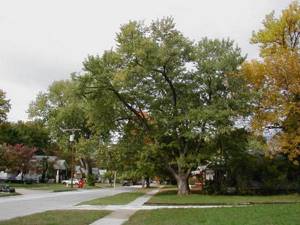
The height of the pyramidal maple does not exceed 20 meters. Vertical branches form a columnar wide crown. Autumn foliage burns deep red. The Vieri maple has a spreading crown covered with greenish-silver leaves. Its fragile branches have increased fragility. The Borns Graciosa variety is endowed with a light crown, studded with huge rugged leaves. The height of the trees does not exceed 15 meters.
Difference between Canadian maple and Norway maple
According to its morphological characteristics, the Canadian maple resembles the Norway maple. The difference is in the juice that is released from the leaf petioles. The Norway maple has a milky liquid, while the sugar tree (another name for the Canadian maple) has clear sap. The foliage of an ordinary maple in the fall turns into the usual yellow color, while the orange maple during this period acquires rich orange shades. There are also significant differences in the plant bark. In Canadian maple it is much rougher.
Types of Canadian maple
Canadian maple, planting and caring for which is not particularly difficult, is found in several varieties.
Canadian red maple. The tree is so called for the red, burgundy and purple colors of the leaves, which set the festive mood of autumn. The crown shape is pyramidal or elliptical.
The height of a tree characterized by rapid growth is on average from 25 to 40 meters, and the life cycle is 150-200 years. Canadian red maple is used for garden decoration; The tree looks impressive in park plantings, gardens, homestead areas, and is used to form green hedges.
Sugar maple: planting features, care and use
- View the full image

Sugar maple
General description of sugar maple
Varieties
Landing
Conditions for growing maple
Applications of sugar maple
The sugar maple originates from North America: it is widespread in the eastern United States and Canada, and the maple leaf is present on the Canadian flag. However, this tree quickly took root in both Europe and Russia; it is found everywhere in temperate latitudes. Sugar maple wood is highly prized because it has dozens of uses and is highly durable and dense. Additionally, its ability to produce sweet maple sap contributes to the tree’s popularity.
Bonsai - growing a smaller copy of a maple tree
You can grow a Canadian maple in a smaller copy of a natural specimen at home yourself. This technique of obtaining a living miniature copy of a plant is called “bonsai” (which means “plant on a tray”). It originated more than 1000 years ago in Japan; gained popularity in Europe in the 80s of the 20th century.
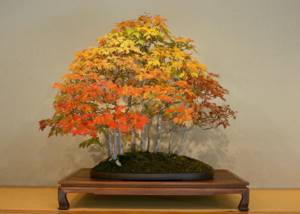
Canadian maple grown using the bonsai technique is an ideal plant for indoor decor; The bright color of autumn leaves will decorate and enliven any room. The method of growing a miniature tree is to keep it in one container, pinching the tops of the shoots and cutting the roots, which ensures a balance between the above-ground and underground parts of the plant. At the same time, using a special wire, the tree is given the required shape.
Maple care
| Step 1: Water your trees periodically
|
| Stage 2. Feed the maple Do this once a year in the spring. Use organic matter - ash or compost |
| Stage 3. Loosen the tree trunk circle
|
| Stage 4. Check the plant for diseases
|

